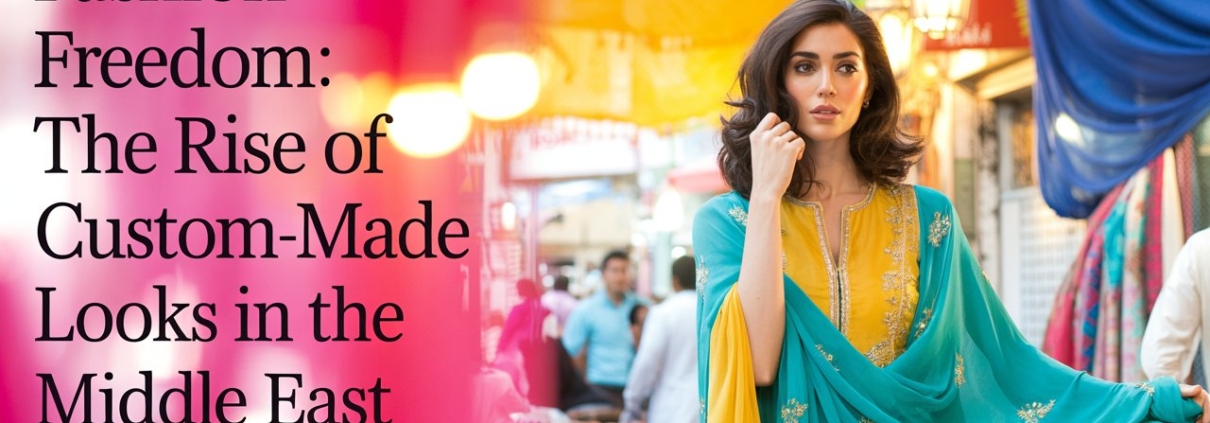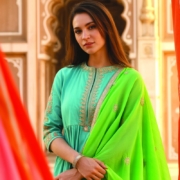Fashion Freedom: The Rise of Custom-Made Looks in the Middle East
Fashion trends in the Middle East have shifted in recent years. More people are choosing custom-made and unstitched clothes, tired of off-the-rack options. This focus is on individuality, creativity, and fashion freedom, not just luxury. With each thread allowing people to express their culture, individuality, and way of life, tailored and unstitched patterns have taken center stage in regional fashion conversations. Let’s discuss this in detail below.
Breaking Free from the Mold
Fashion in the Middle East blends modern style with traditional cultural influences. But mass-produced clothes often lack a personal touch or don’t meet regional needs, like modesty rules or climate. As a result, customers have started seeking more control over what they wear. Custom-made looks offer that freedom. When choosing bespoke apparel, individuals can choose the styles that best fit their body type, the amount of covering they like, and the fabrics that feel comfortable. Those women who wish to combine tradition and fashion are particularly fond of this method. A jumpsuit with traditional embroidery or a contemporary abaya in pastel colors can be what they ask for. In response, designers are providing customized services that pay attention to personal preferences and create apparel that tells a story without using words.
Cultural Roots, Modern Tastes
A special balance between tradition and innovation is shown in the growth of custom-made clothes. In order to accommodate contemporary tastes, up-and-coming fashion designers in the Gulf nations are reinventing traditional attire, such as kaftans, jalabiyas, and dishdashas. For instance, Saudi Arabian social media influencers frequently feature products that combine traditional aesthetics with modern design. Luxurious materials like organza, silk, and chiffon are common options, while decorative features are often inspired by Arabic calligraphy and Islamic art. Custom fashion has also found a stronghold in events like weddings and Eid celebrations. These events require uniqueness and individuality – which are
features bespoke garments excel at. Brides are increasingly approaching designers to create a bespoke wedding gown, selecting all specific details, including the neckline and beadwork. By doing so, they claim the ownership of their look and feel more connected to what they are wearing.
Local Designers Leading the Charge
Local fashion designers have been instrumental in promoting this movement. Doha, Riyadh, and Dubai’s up-and-coming artists now provide custom services that are competitive with those of global brands. While monitoring worldwide trends, these designers are also aware of the cultural quirks of their customers. Emirati designer Huda Al Nuaimi and Kuwaiti brand Marzook, for example, both exemplify this blend by producing items that are both fashionably current and rich in Middle Eastern flair. Digital platforms have made it easy for these designers to connect with customers. Social media has turned into a runway for exhibiting original works of art, particularly Instagram and TikTok. Clients frequently communicate with designers directly, sharing sketches, fabric preferences, and mood boards to help realize their ideal looks.
The Role of Technology and E-Commerce
Custom clothes are now much more accessible because of technology. Nowadays, customers may virtually customize products using online platforms. With only a few clicks, people may co-design their clothing, choosing anything from fabric textures to embroidered designs. Virtual try-ons and AI-powered fit recommendations guarantee that the items they order fit their preferences and body measurements. Men’s fashion has also adopted this trend. Men who want to show off their individualism and elegance are increasingly wearing suits, thobes, and even casual clothing that has been custom-made. E-tailers provide made-to-measure services that blend artistry and practicality.
Sustainability Through Personalization
The trend toward personalized fashion is also being driven by sustainability. Clothing created to order frequently promotes thoughtful consumption. People are more emotionally attached to the clothing and are less inclined to throw it away after wearing it a few times because they have a direct say in its design. Custom clothing prioritizes quality, longevity, and ethical manufacture in contrast to fast fashion, which is based on volume and haste. Local tailors and artisans also gain from this change. Rather than being marginalized by mass production, they are now essential to the production of unique clothing. This dynamic maintains traditional methods like hand needlework and textile dyeing while boosting the local economy.
Conclusion
The trend toward customization is further strengthening as Middle Eastern fashion keeps changing. More than clothing, consumers seek authenticity, meaning, and tales. Fashion created to order offers all of that and more. It gives its users the freedom to celebrate their heritage, define beauty according to their own standards, and express themselves freely. More than just a fad, fashion independence through custom-made clothes is a statement in a region renowned for its distinctive sense of style and rich cultural history. It sends the message that in the Middle East, style is as boundless as the imagination, originality is valued and tradition is not a limitation.





Leave a Reply
Want to join the discussion?Feel free to contribute!